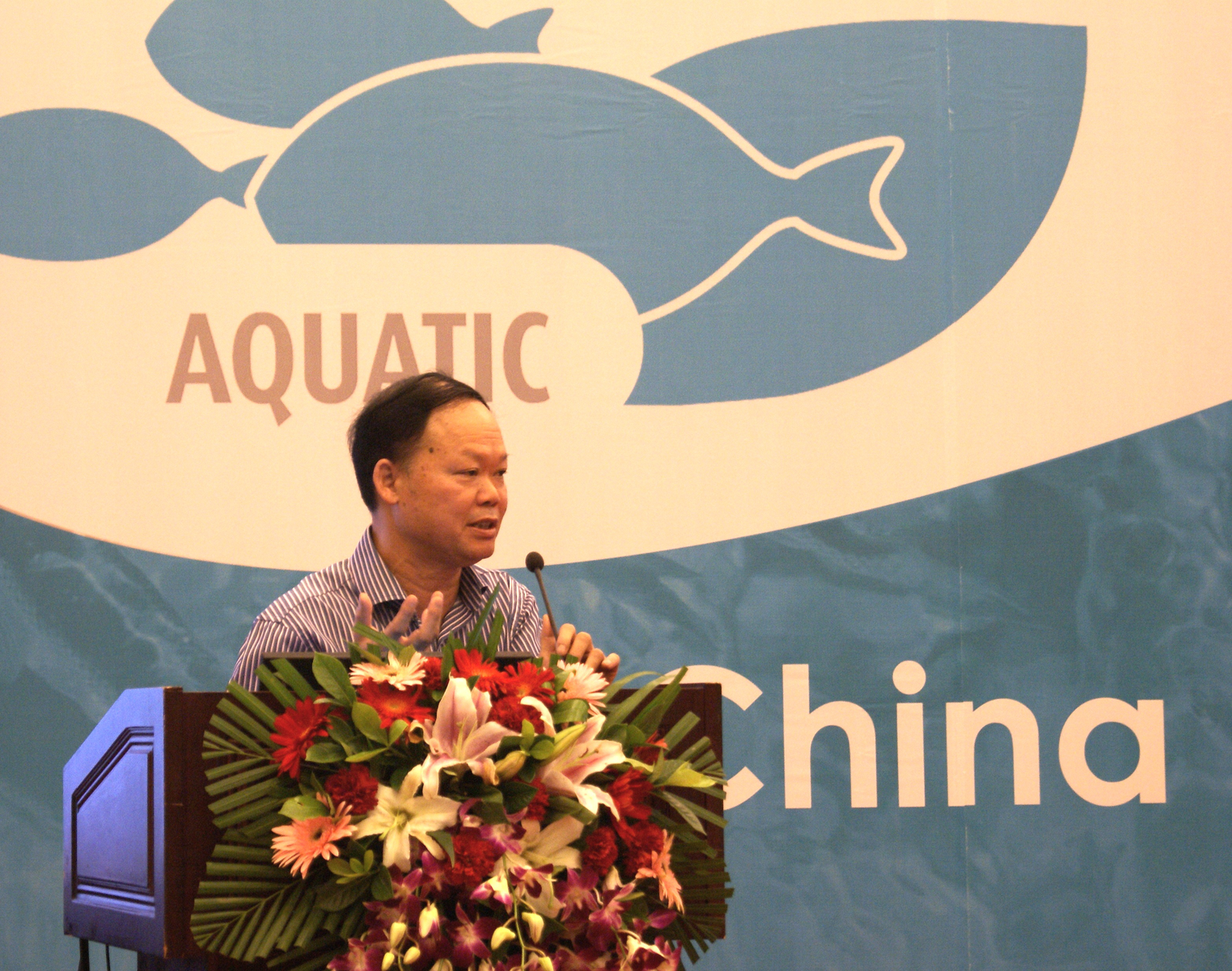Still many challenges for Chinese aquaculture

China is big in aquafeed and aquaculture production. But environmental pollution, consumer confidence and food safety need to be watched. These challenges were addressed at Aquatic China, organised prior to VIV China in Beijing.
The two-day event on aquaculture addressed the current topics in the aquaculture industry, with a strong focus on the Asian market. Dr Kangsen Mai (pictured) from the Ocean University of China said that China has developed rapidly when it comes to aquaculture. Hence, the country increased the aquafeed production from less than 5 million tons in 1991 to 18 million tons in 2012. Mai further noted that growth of the Chinese aquaculture business comes with many challenges.
“I call it the ten shortages that are associated with the rapid growth of this industry. That is, shortage of land, water, protein sources, food safety guarantees, confidence of the consumer, advanced technologies, labour, genetic progress, good medicines and vaccination programmes and quality protection”, Mai said. The shortages regarding protein sources are for example reflected in the hueg amounts of fishmeal and soy meal that China imports every year. In 2012, the country imported 1.24 million tons of fishmeal (85% if its need). Regarding soybean meal, the domestic production was 10 million tons. The remaining volume (60 million tons) was imported.
According to Mai, one of the biggest challenge is controlling and reducing the polluted water (toxins, heavy metals). “Often food safety issues are said to be a feed problem. But in China, this is not the case. It is a multifactorial problem. This in turn, will impact the confidence of the end consumers. This is something that China needs to step up”, Mai said. The good news is that the Chinese government is investing in renovation of current ponds (95% of the fish are produced in traditional ponds, which are often outdated). In addition, more sustainable ways of farming are being investigated, such as deep sea farming and farming in the yellow sea warm current area. These ways of farming will be less polluting and more sustainable. Also recycling of fish waste to turn them into fish feed can be sustainable for China. The country will also then be less dependent on feed ingredient imports.
It was the first time that this aquaculture event was organised in combination with the VIV China. The event, held on September 21-22 in Beijing, attracted around 200 aquaculture professionals and was organised by VNU Exhibitions and Perendale publishers.











